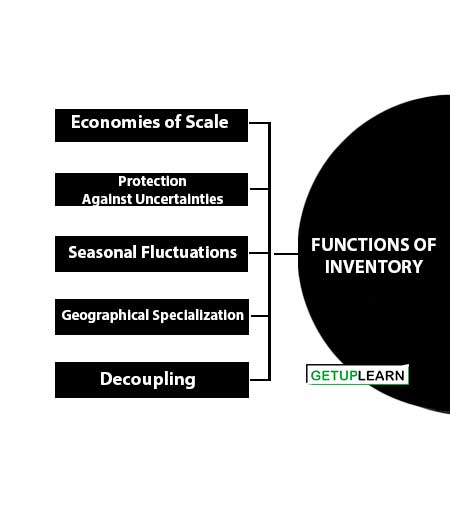Table of Contents
What is Inventory?
It has been established Inventory is the stock of any item or resource and the role of inventory management is to ensure that stock is available to meet the needs of the beneficiaries as and when required. A very high inventory ratio is vital for the health of an organization.
Inventory represents a large cost to the supply chain. This is made up of the cost of transporting the goods, the cost of the inventory itself, plus the cost of managing the goods, and keeping the goods in warehouses. The inventory manager’s job is to make inventory available at the lowest possible cost.
Inventory is the stock of any item or resource used in a company. It includes 1) Raw Materials, 2) Finished Products, and 3) Work-in-Process. The unit includes the Inventory system and its management, determining what levels should be maintained, when should the stock be replenished, and what should be the order size.
The unit reviewed the inventory Management alternatives such as Inventory Control, Reactive Methods, Planning Methods, and Adaptive Logic.
Functions of Inventory
The important functions of inventory are:
- Economies of Scale
- Protection Against Uncertainties
- Seasonal Fluctuations
- Geographical Specialization
- Decoupling

Economies of Scale
Inventory allows companies to get volume discounts from a supplier. Inventories in warehouses may also result in lowering the cost of individual items by enabling larger production batches.
Protection Against Uncertainties
The safety stock or buffer stock protects from short-range variation in either demand or replenishment cycle uncertainties, At times when demand from customers or from a company’s own production operation is not always known or when delivery from suppliers or from production is not always reliable or goods inventories protect from stock-outs.
Seasonal Fluctuations
To ensure continuous availability of goods inventories in distribution or production warehouses are required. In the case of seasonal consumer goods demand, keeping the inventories in distribution and production warehouses enable continuous production at full capacity despite swings in seasonal demand. Clothes and Agricultural goods etc have a seasonal supply as well.
Geographical Specialization
Geographical separation also requires manufactured goods from various locations to be collected at a staging warehouse. These are then shipped together as a mixed product shipment and sent to the required destination.
Decoupling
Decoupling processes permit each product to be manufactured and distributed in economic lot sizes that are greater than market demands.
The production of the lot was carried out keeping in mind the future demand as well as the economies of production. A large shipment with FTL that is full-load capacity of trucks allows to achieve minimum freight cost. There are several disadvantages of carrying inventory, these are:
- Maintaining a large inventory is difficult to control.
- Large inventory levels conceal other problems.
- Product life cycles are becoming shorter ultimately increasing the likelihood of product obsolescence.
- The high costs of inventory storage.
Three basic inventory management costs are:
-
Holding or Carrying Costs: This includes costs incurred due to Loss of Interest on saving, Insurance, Taxes, Depreciation, Obsolescence, Deterioration, Spoilage, Pilferage, Breakage, Warehousing Costs (heat, light, rent, security, and Opportunity Costs associated with having funds which could be used elsewhere tied up in inventory. Holding costs are stated in either of two ways: as a percentage of unit price or as a dollar amount per unit.
-
Ordering Costs: The costs of ordering and receiving inventory. They are the costs that change with the actual placement of an order. These include 1) cost per quantity order, 2) cost incurred in preparing invoices, 3) shipping costs, and 4) inspecting goods upon arrival for quality and quantity and moving the goods to temporary storage. Ordering costs are expressed as a fixed amount per order, irrespective of order size.
- Shortage costs occur when demand exceeds the supply of inventory on hand. These costs can include A) the opportunity cost of not making a sale, b) loss of customer goodwill, etc. c) late charges. Furthermore, if a shortage occurs in an item, the cost of lost production is considered a shortage cost.
